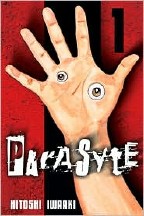Life, in Pictures — Review

OK, so you all know Will Eisner is a genius of comics – inventor of The Spirit, possibe coiner of the “graphic novel” term, namesake of awards, grandfather of every autobio cartoonist of the last three decades – right? But how many of you have actually read his stuff recently?
(Or is it just me – am I the only one who had spent more time reading about Eisner than actually reading his works?)
Eisner, at the end of his life (he died in early 2005), made a deal for much of his extensive backlist to be republished by the very classy – and previous not open to comics – publisher W.W. Norton. They published his last graphic novel, the not entirely successful The Plot, are in the process of reprinting many of his works, and, in particular, assembled three big omnibuses of Eisner’s best stories. The Contract With God Trilogy came out in early 2006, Will Eisner’s New York in late 2006, and now Life, in Pictures collects three of his most autobiographical graphic novels (and a couple of shorter stories).
Eisner was born in 1917, and turned back to comics after his retirement in the mid-‘70s, so it shouldn’t be surprising that there’s something old-fashioned about his stories. But yet these stories are so relentlessly old-fashioned, and so steeped in a New York that was obsolete before I was born, that it needs to be noted. (The story set the closest to modern times in Life, in Pictures is the earliest story, “A Sunset in Sunshine City,” set roughly contemporaneous to its 1985 publication. Other than that, the stories here reach up to WW II at best – and, then, only at the very end of a long story.


 Only two books for Manga Friday this week; the deadline crept up on me and found me with a smaller “read” pile than I expected. But they’re both pretty good, and both are brand-new, which may make up for it.
Only two books for Manga Friday this week; the deadline crept up on me and found me with a smaller “read” pile than I expected. But they’re both pretty good, and both are brand-new, which may make up for it. Yes, we’ve hit the point where reprints of medium-level ‘80s comics can run to eight volumes – and, since the comic in question is
Yes, we’ve hit the point where reprints of medium-level ‘80s comics can run to eight volumes – and, since the comic in question is  This is another one of the periodic clean-up volumes to collect shorter
This is another one of the periodic clean-up volumes to collect shorter  Welcome to the second week of Manga Round-Up! This time, we have four more books from [[[Del Rey Manga]]] – all first volumes in series, as new-reader-friendly as it’s possible to be – which are aimed at a slightly older audience (sixteen and up) than the books I looked at last week.
Welcome to the second week of Manga Round-Up! This time, we have four more books from [[[Del Rey Manga]]] – all first volumes in series, as new-reader-friendly as it’s possible to be – which are aimed at a slightly older audience (sixteen and up) than the books I looked at last week.
 Naomi Nowak is a cartoonist resident in Sweden, of Hungarian-Polish ancestry, and presumably works in English, since this book doesn’t credit a translator. She is thus more cosmopolitan than most of us ever dream of being. This is her second graphic novel, after
Naomi Nowak is a cartoonist resident in Sweden, of Hungarian-Polish ancestry, and presumably works in English, since this book doesn’t credit a translator. She is thus more cosmopolitan than most of us ever dream of being. This is her second graphic novel, after  Everyone has a story – at least one. Every human life could be told in some way, to illustrate a point, or evoke an emotion, or just entertain an audience.
Everyone has a story – at least one. Every human life could be told in some way, to illustrate a point, or evoke an emotion, or just entertain an audience.  Let me be honest: I don’t know all that much about manga. I’ve read a few series (going back to
Let me be honest: I don’t know all that much about manga. I’ve read a few series (going back to  If you haven’t heard of
If you haven’t heard of 








